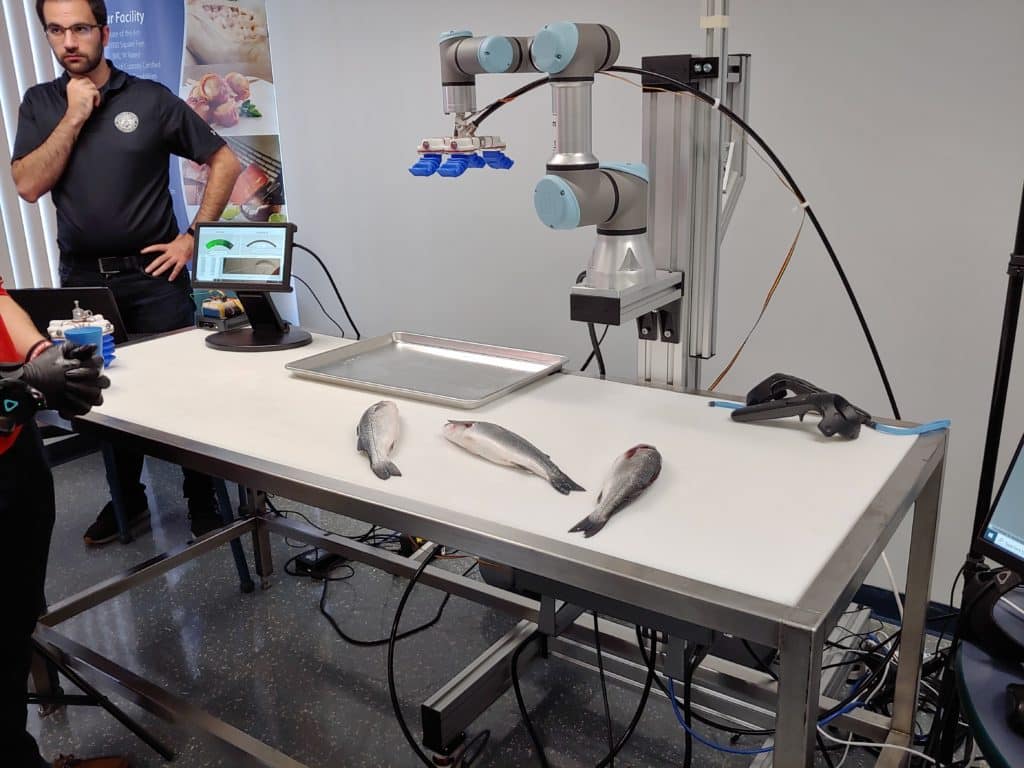Automated Seafood Processing Project
Currently, much of the seafood sold in the US is caught domestically but shipped abroad for processing. The FISH project aims to re-shore seafood processing, thus reducing the risk of food contamination and spurring economic growth. The estimated economic impact of the FISH project amounts to $20B within 5-10 years. The developments from this robotics project have potential for application in the meat, plastics, and textile industries as well.

Automated Seafood Processing Objective
Re-shore seafood processing through the development of a multi-use robot station that can handle fish and operate in a constrained, collaborative environment.
Automated Seafood Processing Technical Approach
The multi-use robot station will include the development of:
- Visual and tactile inspection and manipulation of nonstandard materials
- Novel mechanism designs to handle perishable food items
These innovations will enable the station to:
- Work collaboratively with human workers
- Pick-up fresh seafood from a tabletop or moving conveyor belt
- Sort fresh seafood by weight
- Operate at an accuracy and speed comparable to human workers
- Operate in temperatures and humidity levels needed for seafood processing
- Enhance operations by performing dangerous and repetitive tasks, allowing humans to take on more intricate and less risky tasks
Automated Seafood Processing Participants
Northeastern University (Principal Investigator), Ascend Robotics, Harmonic Drive, MassRobotics, Moog
